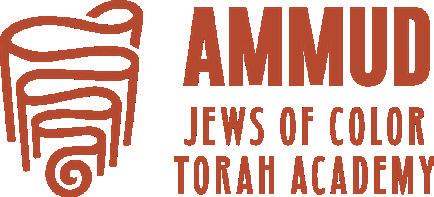Torah Infused Essays & Reflection Guide
Inspiring Essays from Ammud’s Rabbi Ambassadors
RAV TIFERET BERENBAUM
RABBI HEATHER MILLER
RABBI BOBBIE ROSENBERG





RAV TIFERET BERENBAUM
RABBI HEATHER MILLER
RABBI BOBBIE ROSENBERG




Ammud is delighted to introduce you to three amazing rabbis. Learn more about them and their Torah through reading their personal Torah infused essays.
We invite you to take a few minutes, find a relaxing spot, pour a cup of tea, perhaps invite a friend, read these Torah infused personal essays, and reflect on your own lives with our reflective questions found at the end of the guide.
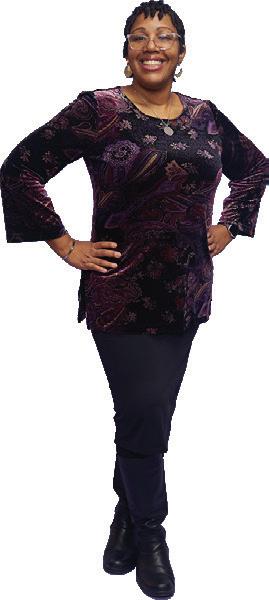

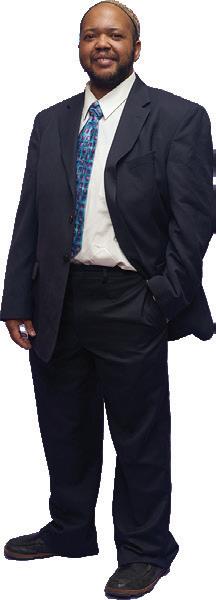
Ammud’s mission is creating and cultivating a community that is for us by us where Jews of Color are able to build resilience and bring their fullest selves to Jewish learning and Torah. Ammud affirms, educates, and builds leadership among Jews of Color, supporting them to be empowered members and leaders of Jewish community and peoplehood.
Ammud’s vision is for Jewish communities and Jewish life to be made whole through inclusive wisdom and practice that is representative of our full racial and ethnic diversity as a people.


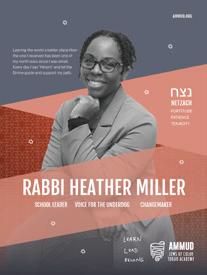
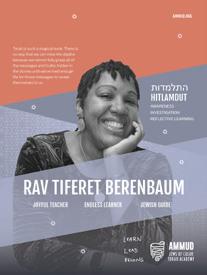
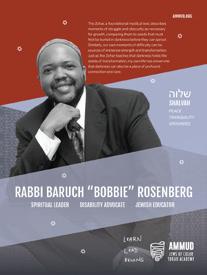



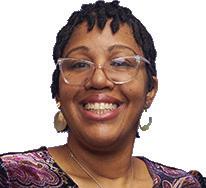
Rav Tiferet Berenbaum is the Rabbi of Congregational Learning and Programming at TBZ Brookline in Brookline, MA. She received rabbinic ordination as well as a Master’s of Jewish Education from Hebrew College in Newton, MA, and is currently pursuing a doctorate in Educational Leadership at Lesley University in Cambridge, MA. Rabbi Tiferet formerly served as senior rabbi and education director at congregations in Milwaukee, WI and in Mt. Holly, NJ. She is a 2021 Covenant Foundation Pomegranate Prize recipient in recognition of her leadership in Jewish education.

My go-to book for Torah inspiration is the Kabbalistic work, Sha’arei Orah, Gates of Light, by the 13th century Spanish Kabbalist
I’ve been learning this sefer (book) with my dear Hevruta, Rabbi Kohenet Sarah Bracha Gershuny, for over a decade, including when I was pregnant with my daughter. Sometimes, she would kick in the womb while I was learning.
The Talmud teaches that when a child is in the womb, she is taught the entire Torah. And, so I imagined those kicks were her way of letting me know she and I were learning the same Torah in that moment!
Niddah 30b. (translation Koren-Steinsaltz Talmud, Sefaria)

And a fetus is taught the entire Torah while in the womb, as it is stated: “And He taught me and said to me: Let your heart hold fast My words; keep My commandments, and live” (Proverbs 4:4). And it also states: “As I was in the days of my youth, when the converse of God was upon my tent” (Job 29:4).

As
parents, as teachers, and as adults who have any interaction with the
next generation, we want to give our children the best lives we can.
I am most concerned with passing along what I feel is the best gift my parents gave to me: faith in Hashem (God). I struggle with how exactly to pass this along since she is growing up in a world that pushes self-dependence, panic, anxiety, and noise that seeks to separate us from cultivating faith and dependence on something beyond ourselves. As always, I turn to Sha’arei Orah for inspiration for how to address this problem.
Each chapter of the book presents what we now call a sefirah, an energetic symbol cluster of the Divine, together with words from Tanakh that Gikatilia demonstrates are associated with that particular sefirah. However, Gikatilia uses the language of gates, as in access points to the divine. The first chapter concerns the portal of malchut-kingdom, the most easily accessible to us. It is the gate associated with Shekhina, the presence of God that went with the Israelites on their journeys in the wilderness. The word brakha-blessing is associated with this most accessible portal because it shares a root with the word breikha, which means pool. Gikatilia explains that the breikha of brakha, the pool of blessing, contains absolutely anything one could ever desire in this life, even things as small as finding a good parking spot at the doctor’s office. I have been blessed to be able to reach into this breikha of brakha many times in my life as my parents gave me a foundation for that access.

And the Holy Blessed One gave this name, this breikha, to Avraham our father (peace be upon him) to open the gates of the storehouses of Hashem to take all that he needed for him and for the world. This is the secret of Genesis 12:2, “I will bless you and I will make your name great and you will be a blessing.” The text does not say “you will be blessed” but rather “you will be a blessing” “for the blessing has passed into your hand, take as you want!”

Sha’arei Orah, The First Gate (translation Rav Tiferet Berenbaum and Rav Kohenet Sarah Bracha Gershuny)
After Avraham, Yitzchak inherited the brakha as the text says, “After the death of Avraham Elohim blessed Yitzchak his son” (Genesis 25:11) This is the brakha that Esav and Yaakov argued over and this was the birthright that Esav sold to Ya’akov. Yitzchak “fulfilled” the sale when he sent Ya’akov off to Padan Aram saying “Get up and go to Padan Aram...El Shaddai will bless you...and give you the blessing of Avraham, you and your offspring with you” (Genesis 28:2-4)...
With this same blessing, Moshe Rabeinu (our teacher, peace be upon him) blessed the People Israel before they entered the land which is the meaning of “And this is the blessing with which Moshe, a man of Elokim, blessed B’nei Yisrael before he died” (Deuteronomy 33:1).
Gikatilia’s text shows us that the power to access the breikha of brakha is transferable, from God to Avraham to Isaac to Jacob to Moshe, down throughout our mythic history, accessible to us still today. So, I passed this along to my child by giving her the middle name brakha in hopes that she cultivates her ability to access the breikha and draw out the brakha that she needs at the moment when she needs it. Even though she is only eight years old, she is beginning to discover the power of her name.

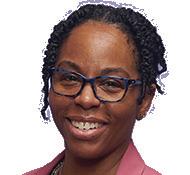

Rabbi Heather is a professional educator who is passionate about creating embracing and supportive spaces for all of the intersected identities in both the religious and secular parts of her life. Her work has reached over 8-million people to date, and she is honored to have been recognized as one of NY Jewish Week’s 36 to Watch 2023, to have had her work featured in the nationally syndicated PBS show Table for All with Buki Elegbede, and to be asked to speak at the 60th continuation of the March on Washington. Her favorite role of all, however, is as the mother of three amazing boys who are proudly descended from both formerly enslaved people and Holocaust survivors.
Some time afterward, God put Abraham to the test, saying to him, “Abraham.” He answered, “Here I am.”
When I was making the decision about whether or not I was going to go to rabbinical school, I had a vivid dream that I still remember viscerally.
In it, I heard a deeply familiar male voice say my name and I felt wings flutter open out of my back. At the time, I processed this as my grandfather (z”l) giving me his blessing and signalling to me that this was the path I was supposed to be on to become my fully actualized self. I said “hineni” to the Divine and accepted the admissions decision that was in my inbox. I decided that I would step fully into this chapter and be fully open to receive whatever life had in store for me on this journey.
In the verse above, Abraham is given a test in which he is asked to sacrifice his son. During Parsha study, we unpack the layers of generational trauma unleashed on this family. So much of my own journey in the Jewish communal and organizational world centers my children. Though I have had a lifetime of my own experiences, when they started having their own, I could not allow that to shape how they saw themselves in their Judaism. As their mother, all I want for them is to live a life free of barriers that will prevent them from growing into the people they were put on this earth to become; I cannot imagine being called upon to bind them – or do anything that would stifle them.


Over the years there have been many moments when our Jewish world made my children feel like they needed to be small. In my despair, I called out to the Heavens saying, “Hineni” – declaring that I was open to do whatever would be required of me to make their hurt go away.
When Hashem saw that he had turned aside to look, God called to him out of the bush: “Moses! Moses!” He answered, “Here I am.”
I’ve always asked, how many people walked by the burning bush and did not notice that it was ablaze but not being consumed? In this moment, Moshe showed that he was a person who paused long enough to observe that something was out of place; he asked questions and then took action (even when he felt that he did not have the tools to do so). In our world today, how many times do folks see things that go against their values and not act?
How many times do folks assume that someone else will take care of it or explain away what they see so that it doesn’t enter their hearts?
How many times have you been the one who is being harmed while folks around you failed to be the upstander you needed? I do my best to look at situations and settings and ask ‘who is included and who might feel left out?’ and then do what I can to support making spaces as inclusive and welcoming as they can be. If I was able to support even one person over the course of my day, I consider that I have lived up to my life’s purpose. In those reflection moments, I’m saying “Hineni, how can I best be of service?”

There are about 180 uses of the word hineni in the Tanakh. This means that there are at least 180 instances where the speaker is making a choice to stand up, be present, say ‘yes’ and assert that they are open to receiving whatever the Universe has in store for them. In my life, this has meant wading into some deep waters like Nachson and having faith that the seas would part – that the Divine will give me what I need to make change happen. I answered the call and hope, every day, that the work I have put into the world both makes my ancestors proud and that it creates a legacy for the generations that will come after me. Leaving the world a better place than the one I received has been one of my north stars since I was small. Every day I say “Hineni” and let the Divine guide and support my path.
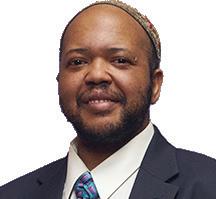

Rabbi Baruch “Bobbie” Rosenberg, born and raised in the Chabad-Lubavitch movement, draws from his own spiritual practice with Chasidic traditions. He bring the underlying message that everyone can learn Chasidus and Kabbalah and use these tools to create achdut (unity) within our communities. Rabbi Baruch has a M.A in Religious Studies from Harvard University and is a Yeshivat Hamivtar alumnus and Storahtelling Maven. Inspired by his interactions with various disabled students over the years, Rabbi Rosenberg established Ohr HaOlam as a new, virtual Jewish community dedicated to ensuring full inclusion of all disabled Jewish individuals in all aspects of Jewish life.
When I was a child, my community learned that I had a rare condition which triggered an allergy to the sun.
Because of it, I had to wear special clothing to protect my skin. I could have been left to “sit alone” with my condition, but they did not let me sit alone. The community wrapped my layers of clothing in tznius (modesty), and the other children wrapped their bodies in layers of clothes like me. When I had to remain in shaded areas or play outside under the cover of darkness, the community stayed by my side, they showed solidarity, and they helped me bear the burdens of this rare condition. Not because they were asked to, but because they had enough love and compassion inherently to become my Circle of Support.
My community saw me, not as a person who was in need of being cured, but as a person in need of care – created B’Tselem Elohim (in the image of God), exactly as I was meant to be created. Though much of my life revolved around darkness, they embraced the entirety of who I was. They enveloped me in love, and they lifted me with support - they were my light.
The earth was unformed and void, with darkness over the surface of the deep

In many cultures, darkness is often associated with fear, uncertainty, and the unknown. Yet, in Judaism, darkness is not only acknowledged but embraced as a sacred and transformative space. From the very beginning of creation, the Torah teaches us that before there was light, there was darkness: “And the earth was unformed and void, with darkness over the surface of the deep” (Genesis 1:2).

Darkness was not an absence of God’s presence but rather the foundation upon which creation was built.
Jewish tradition teaches that darkness is not something to be feared, but something to be engaged with. In the story of Yetziat Mitzrayim (the Exodus from Egypt), the ninth plague was darkness — a deep, tangible oppression. However, the Torah tells us that “for all the children of Israel, there was light in their dwellings” (Exodus 10:23). This suggests that even in moments of external darkness, we have the power to create and sustain inner light.
Our liturgy reflects this understanding in the blessing of Yotzeir Or, recited each morning before the Shema:
the first blessing before Shema (translation
Who forms light and creates darkness, Who makes peace and creates all things
This blessing, drawn from Isaiah 45:7, acknowledges that both light and darkness are part of God’s divine creation.

We not only thank God for light; we recognize that darkness, too, plays an essential role in the balance of existence. Darkness is not a punishment; it is a necessary part of creation, just as night follows day, and challenges lead to growth.
Perhaps the most profound example of embracing darkness comes from Havdalah, the ceremony marking the transition from Shabbat to the rest of the week. As we hold the braided candle, we spread our fingers to observe the interplay of light and shadow. The shadows are not rejected; they are acknowledged as part of our reality. Darkness and light exist together, neither one negating the other.

Kabbalistic teachings expand on this idea, suggesting that within darkness lies deep wisdom.
The Zohar, a foundational mystical text, describes moments of struggle and obscurity as necessary for growth, comparing them to seeds that must first be buried in darkness before they can sprout. Similarly, our own moments of difficulty can be sources of immense strength and transformation.
Just as the Zohar teaches that darkness holds the seeds of transformation, my own life has shown me that darkness can also be a place of profound connection and care.
When my community embraced my need to live in the shadows, they didn’t see darkness as something to fear or fix — they saw it as part of who I was, and they stood with me in it. In that solidarity, I found light.
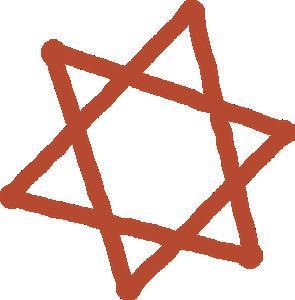


Reflect on your own, with a friend, or in a circle.
1. What are some blessings in your life? Are the blessings composed from words, resources, relationships, art, or something else?
2. What are blessings that your elders or ancestors gave to you? What blessings do you hope to pass on to others in the future?
3. In what ways has your community rallied around you? In what ways have you rallied around your community?
4. When have you felt called to follow a particular path in life? What or who called you to that path?
5. When do you feel it is important to embrace the darkness in life? When do you embrace light?
6. Do you have a personal hineni moment, one where you knew you were the right person to give back, show up, or offer support?
7. What actions does learning this Torah inspire you to take?

Check out our Jewish learning programs at Ammud: The Jews of Color Torah Academy at Ammud.org and please consider supporting our work by making a donation.
